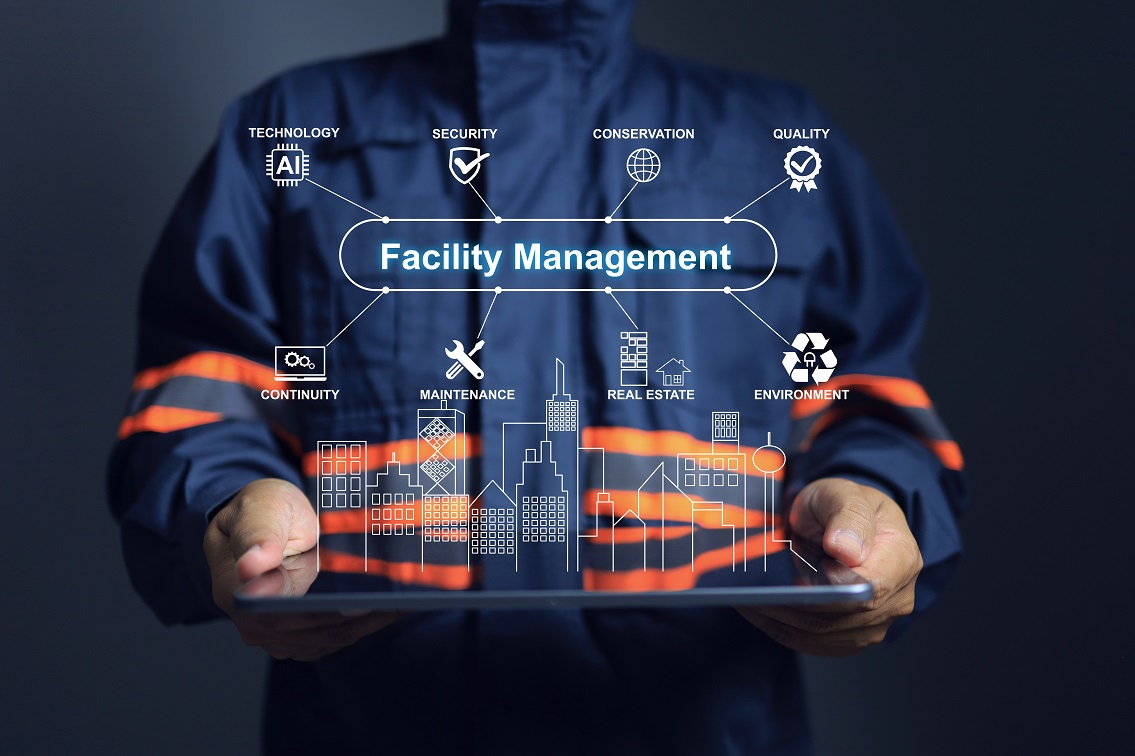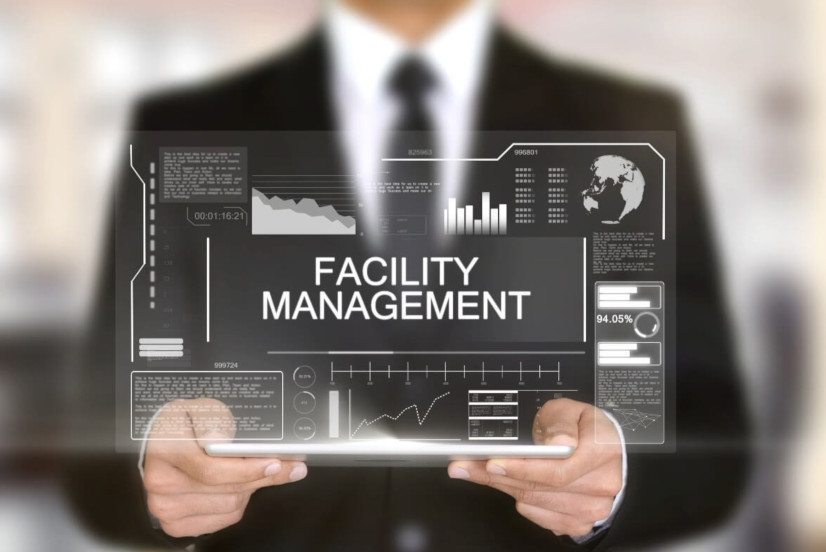Secret Trends Forming the Future of Facility Monitoring in 2024
As we expect 2024, the landscape of facility monitoring is poised for significant improvement, driven by numerous essential fads. The combination of clever building technologies and a change towards data-driven decision-making pledge to enhance functional efficiency while focusing on sustainability in practice. Moreover, the emergence of crossbreed work designs is improving office settings, necessitating ingenious style remedies that provide to advancing staff member demands. Amid these modifications, the concentrate on occupant wellness proceeds to obtain traction, highlighting the value of a healthy workplace. Exactly how these fads will manifest in method continues to be a critical inquiry for industry experts.
Smart Structure Technologies

Smart structure modern technologies include a broad array of systems, including intelligent illumination, cooling and heating controls, and protection systems. By integrating these systems, facility supervisors can keep track of and adjust criteria in real-time, resulting in significant decreases in energy waste and functional expenses. For circumstances, clever sensors can discover tenancy levels and adjust lighting and temperature level appropriately, guaranteeing that power is only made use of when needed.
Additionally, these technologies assist in enhanced data collection, enabling companies to track usage patterns and determine possibilities for further renovations. The implementation of wise structure innovations not just adds to sustainability goals yet also produces much healthier work atmospheres that can enhance employee efficiency and satisfaction.
As we move right into 2024, the adoption of smart structure technologies will likely speed up, mirroring a broader shift towards even more smart, responsive, and sustainable center monitoring practices.
Data-Driven Decision Making
Significantly, companies are leveraging data-driven decision making to enhance facility administration techniques. By utilizing data analytics, center managers can acquire workable insights that dramatically improve functional performance and source allotment. The combination of innovative innovations, such as IoT sensing units and real-time surveillance systems, enables the collection of huge amounts of data on building performance, tenancy rates, and energy consumption.
This wealth of information allows facility managers to identify trends, predict maintenance requirements, and proactively address concerns before they rise. As an example, predictive analytics can forecast equipment failures, reducing downtime and repair work expenses. In addition, information visualization devices assist in much better communication among stakeholders, making sure that notified decisions are made collaboratively.
Furthermore, data-driven techniques improve calculated planning by enabling center supervisors to examine the efficiency of current practices and make educated options concerning investments in technology or framework. As organizations increasingly focus on operational quality, data-driven decision making is positioned to end up being a cornerstone of effective facility management approaches in 2024 and beyond. Ultimately, the capability to take advantage of data successfully will empower companies to create extra effective, productive, and resistant facilities.
Sustainability and Environment-friendly Practices
The focus on data-driven decision making normally aligns with the expanding focus on sustainability and environment-friendly practices within center administration. As companies progressively prioritize environmental responsibility, center supervisors are leveraging analytics to optimize resource use, minimize waste, and minimize carbon impacts. This strategic technique enables the combination of energy-efficient systems, such as LED lighting, wise a/c controls, and renewable resource sources into facility procedures.
Furthermore, the execution of sustainable methods expands beyond power intake. Facility supervisors are taking on environmentally friendly products and promoting recycling efforts to develop a circular economic climate within their centers. This not just enhances the environmental account of the company but likewise cultivates a society of sustainability among workers.
Conformity with ecological regulations is important source one more essential aspect driving the adoption of eco-friendly techniques. By utilizing data analytics, facility managers can keep an eye on conformity metrics and identify areas for improvement, making sure adherence to international and local sustainability requirements.
Hybrid Job Designs
A substantial change in the direction of crossbreed job models is improving the landscape of facility administration in 2024. This paradigm integrates in-office and remote job, demanding a reevaluation of room application, source appropriation, and employee engagement strategies. Organizations are increasingly recognizing the importance of flexible workspaces that cater to diverse demands and choices.
Facility supervisors should adjust by executing functional workplace designs that support collective initiatives while providing locations for focused work. This includes the click this link assimilation of technology to assist in smooth interaction and partnership among in-office and remote workers. Smart structure services, outfitted with analytics and sensing units, permit real-time tracking of room use, enabling organizations to maximize their atmospheres effectively.
Moreover, hybrid job versions emphasize the need for efficient center monitoring that prioritizes worker experience. This incorporates not only innovation and area style however additionally the development of policies that promote a balanced work-life dynamic. As business browse this shift, the duty of center monitoring becomes critical in producing an active office that cultivates performance and drives business success. Fundamentally, the hybrid work model is transforming facility administration, motivating a positive method to satisfy the progressing needs of the workforce.
Improved Resident Wellness
As organizations welcome hybrid job designs, a heightened emphasis on passenger health is ending up being important to center administration approaches. Facility Management. This change identifies that a healthy and balanced and satisfied workforce directly influences efficiency and retention rates. Center managers are now focusing on atmospheres that promote psychological and physical well-being, incorporating aspects such as all-natural illumination, biophilic design, and accessible wellness sources

Technology plays a vital duty in this evolution. Smart building systems can keep an eye on ecological factors and adjust setups in real-time, ensuring optimum convenience levels - Facility Management. Additionally, comments systems, such as occupancy sensors and employee surveys, enable facility supervisors to link consistently improve wellness initiatives based on resident requirements.

Final Thought
In 2024, the future of center monitoring will certainly be significantly affected by the assimilation of clever structure technologies and data-driven decision-making, promoting enhanced functional effectiveness. Sustainability efforts will certainly prioritize environmentally friendly practices, while the development of hybrid work versions will certainly necessitate adaptable workplace designs. An increased emphasis on passenger wellness via sophisticated Heating and cooling systems and biophilic style will contribute to healthier job atmospheres. These trends jointly underscore the advancing landscape of facility administration in feedback to contemporary difficulties and possibilities.
Center supervisors are promoting and embracing eco-friendly materials reusing efforts to produce a circular economic situation within their facilities.A significant change in the direction of hybrid job designs is improving the landscape of center monitoring in 2024.Moreover, hybrid job versions emphasize the demand for efficient facility monitoring that prioritizes worker experience.As companies embrace hybrid work versions, an increased emphasis on occupant health is coming to be indispensable to facility monitoring approaches.In 2024, the future of facility management will be substantially affected by the assimilation of smart structure innovations and data-driven decision-making, promoting enhanced functional effectiveness.